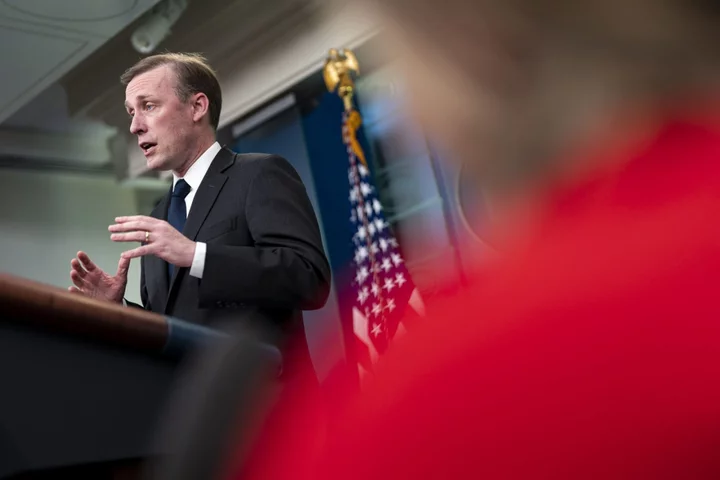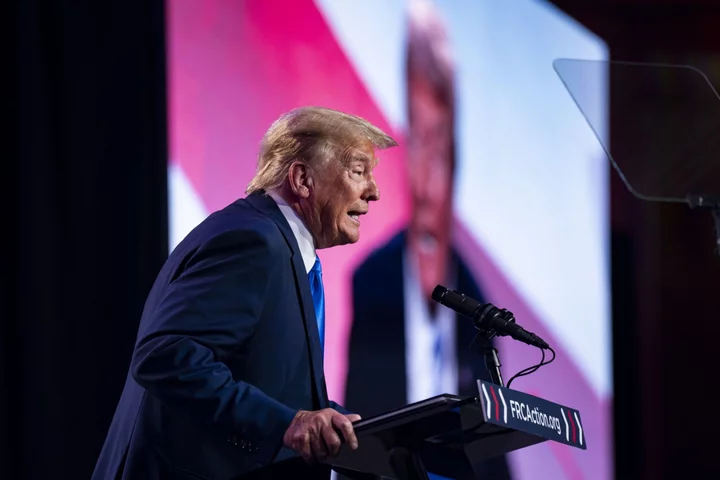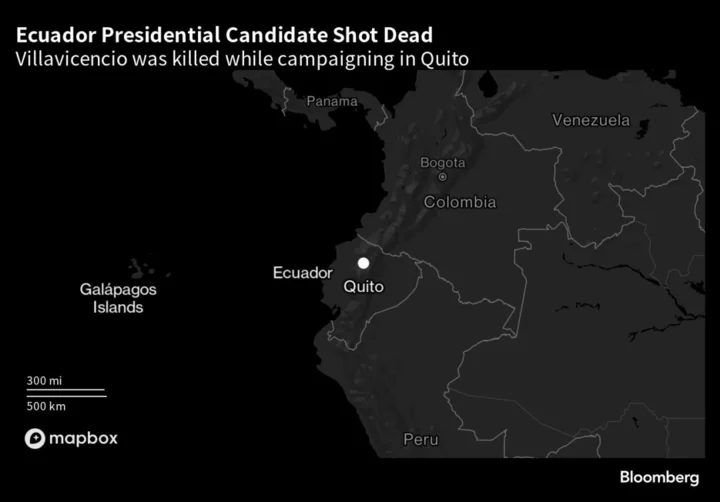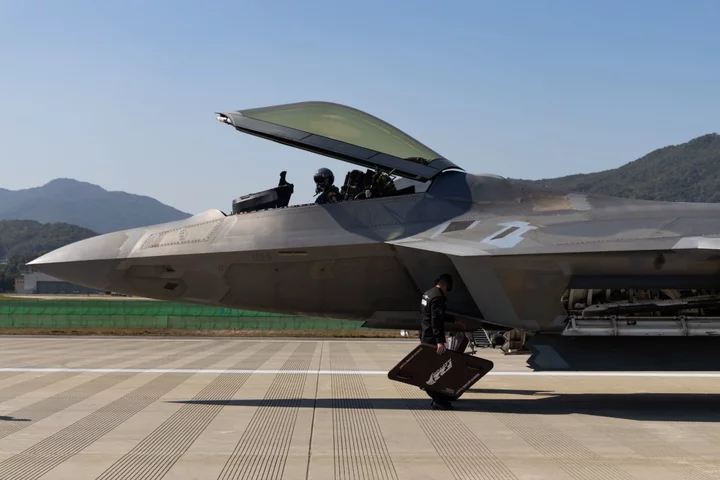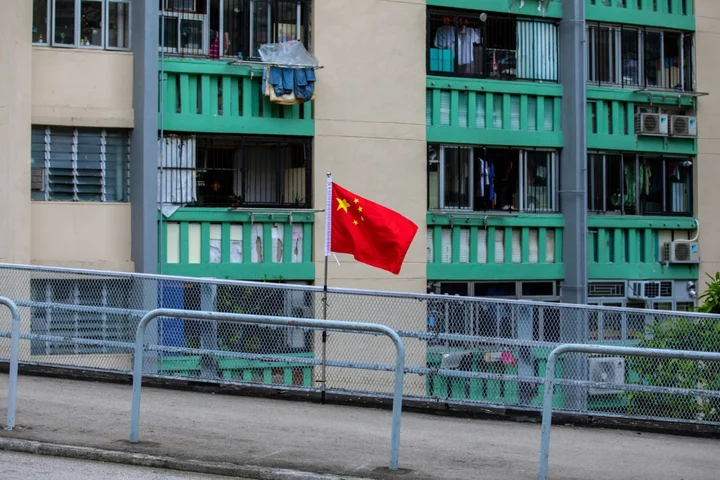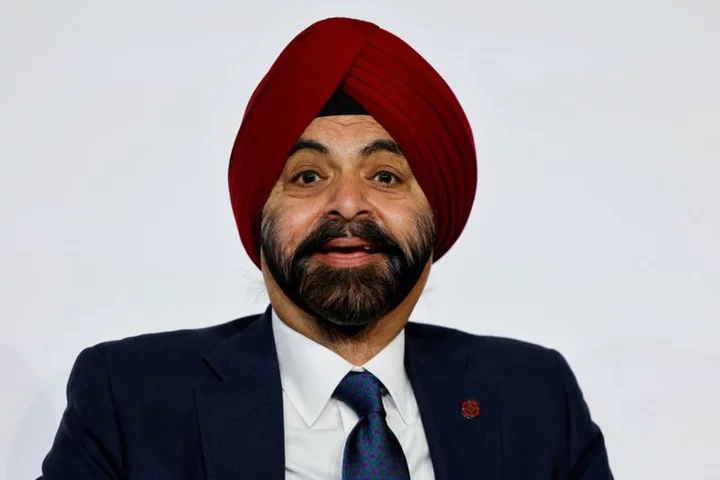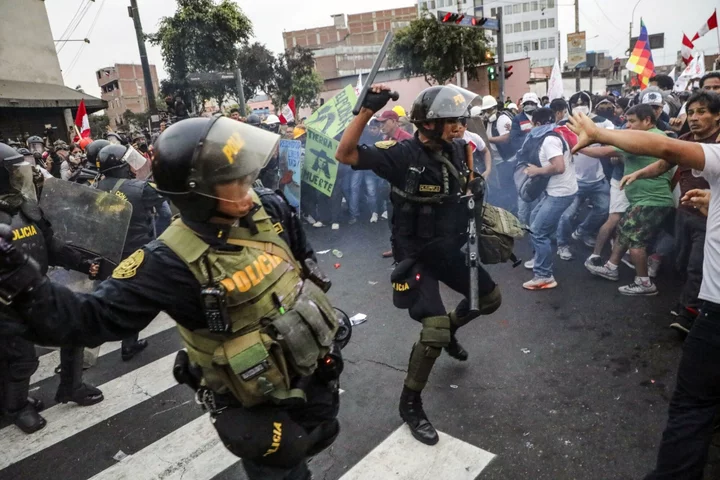US National Security Adviser Jake Sullivan sat down with China’s top diplomat for two days of what the White House called “substantive and constructive” meetings, a sign that the sides are working to ease strains that led to a breakdown in even the most routine communication.
Sullivan’s May 10-11 meetings in Vienna with Wang Yi touched on “key issues in the U.S.-China bilateral relationship, global and regional security issues, Russia’s war against Ukraine, and cross-Strait issues, among other topics,” the White House said in a statement.
The talks lasted for more than eight hours over the two-day session, with Sullivan reiterating US concerns about China potentially offering lethal aid to Russia amid its invasion of Ukraine and focusing on how to manage tensions over Taiwan, a senior administration official told reporters Thursday.
Both sides acknowledged that it was time to move beyond the incident that led to a pause in US-China interactions — the shooting down of an alleged Chinese spy balloon in February — and the US expects more engagements in the coming months, the official said, speaking on condition they not be named.
The White House framed the talks as “part of ongoing efforts to maintain open lines of communication and responsibly manage competition.” China’s state-run Xinhua News Agency, described the meeting in a similar way, calling the talks “candid, in-depth, substantive and constructive,” and aimed at “removing the hurdles” to the bilateral relations.
The conversation set the stage for a possible call between President Joe Biden and Chinese President Xi Jinping, something that Chinese leaders have resisted for weeks. On Wednesday, Biden told reporters there has been progress in setting up a call with Xi and that “it’ll work out,” though he declined to provide details on when.
It wasn’t clear who initiated the talks between Wang and Sullivan, but the US has embarked on a strategy in recent weeks of pressing China for meetings from the lowest level all the way up to Xi and Biden. It’s part of US efforts to restore some sense of normalcy to a relationship that’s grown increasingly tense, while also painting Xi as recalcitrant if he refuses.
Another objective is to assuage allied nations in Asia and Europe that are anxious the US isn’t doing enough to ease strains that some fear could lead to open conflict — especially after the two sides traded repeated barbs over the balloon, which transited the US and was shot down by US fighter jets.
That planning has also been accompanied by a broader messaging campaign from Treasury Secretary Janet Yellen and Sullivan saying the US doesn’t want to sever economic ties — just address the possible national security concerns.
Biden’s team is also looking to establish what it calls guardrails for a relationship facing deeper, more systemic strains around economic competition and China’s continued partnership with another US adversary, Russia. Sullivan and Wang spoke in March as tensions surged over Taiwan days before the island’s president, Tsai Ing-wen, visited the US. Sullivan met in Luxembourg in June last year with China’s top diplomat at the time, Yang Jiechi.
Read more: Biden Administration Tamps Down Talk of US-China Decoupling
Beijing has rejected US attempts to frame the relationship around “competition” and “guardrails,” with Foreign Minister Qin Gang saying in March the intention is to “contain and suppress China in all respects.”
The US push started in earnest in recent weeks as the balloon furor died down. Even so, the visit by Tsai, which included an unprecedented meeting on US soil with House Speaker Kevin McCarthy, further complicated any effort to ease tensions.
In the time since, the administration has floated the idea of calls and meetings with senior leadership in China, including between Defense Secretary Lloyd Austin and his counterpart and Trade Representative Katherine Tai and China’s commerce minister.
People familiar with the matter acknowledge that the US strategy of requesting so many meetings could paint Biden as a supplicant seeking the favor of a powerful adversary. It has already garnered skepticism from critics of the Biden administration who warn it makes the US look weak.
“This is a smart but risky play,” said Evan Medeiros, former senior director for Asia on the Obama National Security Council. “It looks credible to Europe and Asia. But it also risks reinforcing China’s view that we need them more and they can drive the US-China agenda.”
So far, China has responded tepidly to the US requests. It has ignored Austin’s outreach for calls and hasn’t publicly responded to his request for a meeting on the sidelines of the Shangri-La Dialogue in Singapore set for June. On Wednesday, the Financial Times said China has told the US there’s little chance of a Shangri-La meeting between Austin and Chinese Defense Minister Li Shangfu.
China hasn’t even said if Commerce Minister Wang Wentao will travel to Detroit for an Asia-Pacific Economic Cooperation meeting, where Tai has floated the idea of bilateral talks.
US allies have made clear they don’t want to be drawn into a conflict between the two countries. A draft paper from the European Union’s foreign policy arm, obtained by Bloomberg News, said the bloc has a “fundamental interest to engage China - and the US - in maintaining the status quo and de-escalating tensions” in the Taiwan Strait.
Read more: EU Suggests Limits on Its Approach to US-China Rivalry
“Coordination with the United States will remain essential” for both clear-eyed engagement with China and management of the risk the country poses, said the document. “However, the EU should not subscribe to an idea of a zero-sum game whereby there can only be one winner, in a binary contest between the US and China.”
Even so, there are tentative indications the strains that have marked the relationship in recent months may be easing. Qin met US Ambassador Nicholas Burns in Beijing on Monday for the first time since becoming China’s foreign minister, a symbolic move that may indicate Beijing’s willingness to allow more senior-level discussions.
Read more: China’s New Foreign Minister Meets US Envoy for First Time
On Thursday, Burns sat down with Chinese Commerce Minister Wang Wentao, exchanging views on trade issues between the world’s largest economies, the Commerce Ministry said in a statement.
“Due to the extreme anti-China hostility by the US government, China is giving the US the cold shoulder, refusing to let a number of senior US officials to come to China,” said Gao Zhikai, a former Chinese diplomat who served as translator to the late leader Deng Xiaoping. “China’s position is clear — stop violating the One China policy and stop promoting Taiwan separatism and sedition.”
Critics of the Biden administration’s approach have been similarly blunt in their skepticism.
“I just don’t understand this sort of desperation to have a meeting and the ardent suitor behavior that the Biden administration is exhibiting,” Republican Representative Mike Gallagher, who chairs the newly created China Select Committee, said at an event in Washington on Wednesday.
“There does seem to be this kind of renewed push on engagement right now from the administration, or just sort of this idea that we can engage in some areas, we can compete in other areas,” Gallagher said. “All of it, I think, creates a lot of confusion in terms of our overall strategy.”
--With assistance from Jacob Gu, Alberto Nardelli, Natalia Drozdiak and Iain Marlow.
(Updates with administration official in third paragraph.)

